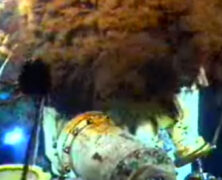For weeks, now, online news outlets have been running live streaming video of the Gulf Coast oil leak, courtesy of British Petroleum. And I don’t mean, by this, that the oil leak itself is courtesy of BP—which, of course, it in large part was and is (but also of the whole bloody system that produces and sustains something like BP in the first place)—but that the live streaming video has been provided by BP itself, as a part of the company’s damage-control performance of a commitment to keeping the public abreast of the situation. The idea seems to be to counteract the negative publicity that has resulted from the oil spill itself and the unprecedented environmental and economic damage that has attended to it with a show of unprecedented corporate transparency. But if the live streaming video of the underwater leak is its sign and symbol, BP’s turns out to be an odd sort of transparency, indeed no matter what time of the day or night one tunes in to the underwater video feed, what one sees is always the same: a hopelessly muddy image, as though photographed through a mud-covered lens, of a kind of muddy muddiness gushing into muddily muddy water. If there were any doubt about the muddy opacity of all of this transparency, it was erased once and for all when, just the other day now, we were treated to muddy underwater footage of actual mud being pumped into the underwater oil well in yet another effort to somehow staunch the spewing. It’s difficult not to wonder if, in predictably cynical fashion, BP located precisely that point of view from which seeing absolutely everything meant seeing absolutely nothing at all—just mud in mud through mud—and promptly installed their show-the-public-everything cameras...

